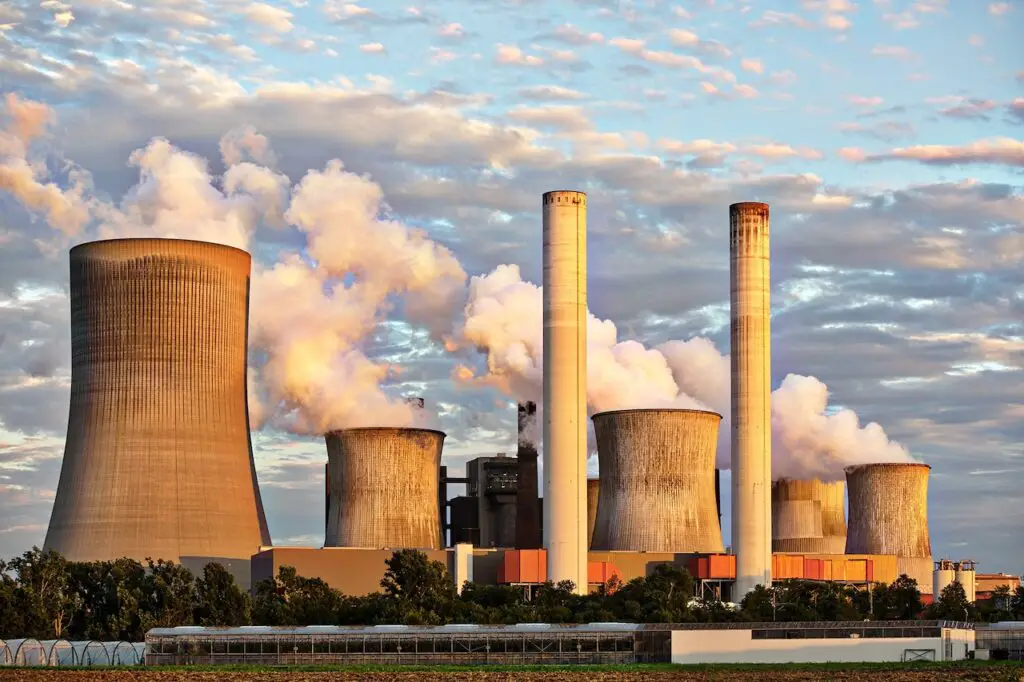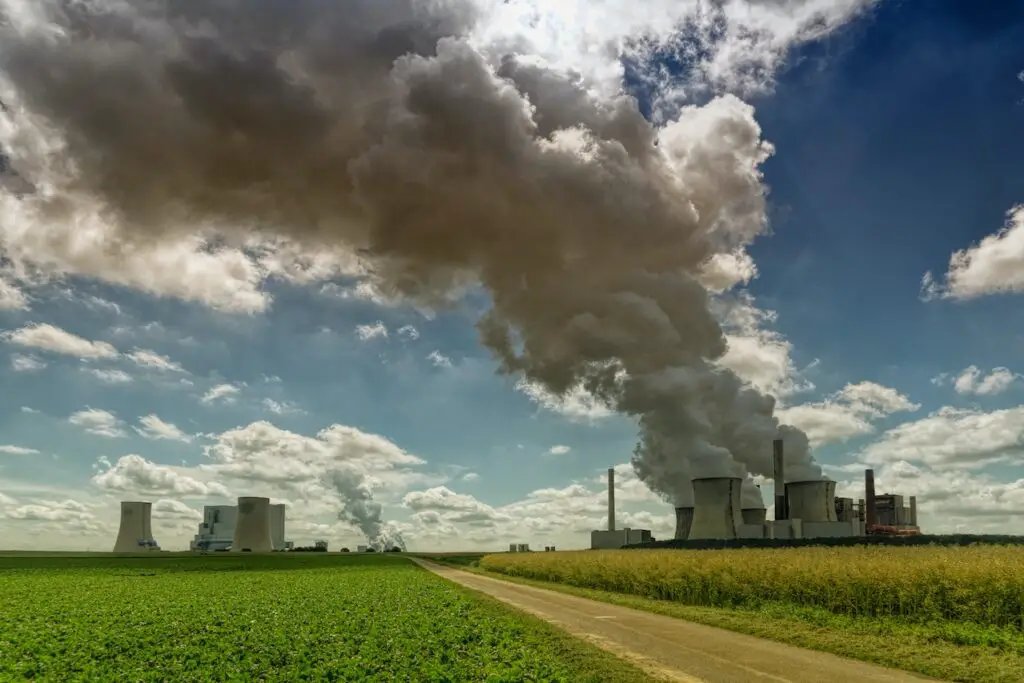With climate change becoming an increasingly pressing issue, many individuals and companies are looking for ways to reduce their carbon footprint. One popular solution is to plant trees, which are known for their ability to absorb carbon dioxide from the atmosphere. But does planting trees really offset carbon emissions?
Is it a viable solution for combating climate change? In this post, we’ll explore the facts and myths surrounding tree-planting as a carbon offset strategy, and help you understand its true effectiveness in the fight against climate change. So, let’s dive in!

The Science of Carbon Offsetting
Carbon offsetting is a process that allows individuals and companies to reduce their carbon footprint by investing in projects that reduce greenhouse gas emissions. The basic principle behind carbon offsetting is that if you can’t reduce your own carbon emissions, you can pay someone else to reduce theirs instead.
There are different types of carbon offsetting strategies, but they all involve the same basic process. First, you calculate your carbon footprint by estimating the amount of greenhouse gases you produce through activities such as driving, flying, and using electricity. Once you have calculated your carbon footprint, you can then purchase carbon credits from a carbon offset provider. These credits represent a reduction in greenhouse gas emissions somewhere else in the world, such as a wind farm or a reforestation project.
Carbon offsetting can be an effective way to reduce greenhouse gas emissions, but it is important to choose a reputable carbon offset provider and to understand the limitations of the strategy. Some critics argue that carbon offsetting can be a “greenwashing” tactic that allows companies to continue emitting greenhouse gases without actually reducing their carbon footprint. Others argue that carbon offsetting can be a valuable tool in the fight against climate change, as long as it is used in conjunction with other strategies such as energy efficiency and renewable energy.
Overall, carbon offsetting is a complex and evolving field, and it is important to stay informed about the latest developments and best practices. In the next section, we’ll explore the role of trees in carbon offsetting and how they can be used as a strategy for reducing greenhouse gas emissions.
The Role of Trees in Carbon Offsetting
Trees play an important role in carbon offsetting because they absorb carbon dioxide from the atmosphere through the process of photosynthesis. During photosynthesis, trees use energy from the sun to convert carbon dioxide and water into oxygen and glucose. The carbon dioxide is stored in the tree’s biomass, which includes the trunk, branches, leaves, and roots.
Tree-planting has become a popular carbon offset strategy because it is relatively easy to understand and implement. The idea is simple: plant more trees to absorb more carbon dioxide from the atmosphere. However, the effectiveness of tree-planting as a carbon offset strategy depends on several factors, including the type of trees planted, the location of the planting, and the management of the trees.
One of the benefits of tree-planting as a carbon offset strategy is that it can have co-benefits for the environment and local communities. Trees provide habitat for wildlife, prevent soil erosion, and can improve air and water quality. In addition, tree-planting initiatives can create jobs and support local economies.
However, there are also limitations to tree-planting as a carbon offset strategy. For example, it can take several years for newly planted trees to reach maturity and start absorbing significant amounts of carbon dioxide. In addition, the effectiveness of tree-planting depends on factors such as the type of soil, the climate, and the amount of sunlight and water available.
Overall, tree-planting can be a valuable carbon offset strategy when done correctly and in conjunction with other strategies such as energy efficiency and renewable energy. In the next section, we’ll explore some common misconceptions about tree-planting and carbon offsetting and why some initiatives may not be as effective as they seem.
Debunking the Myths
There are many common misconceptions about tree-planting and carbon offsetting that can lead to ineffective or even harmful initiatives. Here are a few of the most common myths:
Myth #1: Tree-planting can offset all carbon emissions. While trees can absorb carbon dioxide from the atmosphere, they cannot offset all carbon emissions. In order to effectively combat climate change, it is important to reduce carbon emissions through strategies such as energy efficiency and renewable energy in addition to carbon offsetting.
Myth #2: Any tree-planting initiative is a good one. Not all tree-planting initiatives are created equal. Some initiatives may not take into account the local ecosystem or may use non-native species that can harm the environment. In addition, poorly managed tree-planting initiatives can lead to deforestation, which can actually increase greenhouse gas emissions.
Myth #3: Planting trees is a one-time solution. Tree-planting is not a one-time solution. Trees require ongoing maintenance and management in order to continue absorbing carbon dioxide from the atmosphere. In addition, trees can eventually reach maturity and stop absorbing carbon dioxide, so it is important to continually plant new trees to maintain the carbon offsetting benefits.
Myth #4: Tree-planting initiatives are always beneficial for local communities. While tree-planting initiatives can have co-benefits for local communities, they can also have negative impacts if not done correctly. For example, if a tree-planting initiative is not managed properly, it can lead to land conflicts or displacement of local communities.
Overall, it is important to be aware of these common myths and to choose tree-planting and carbon offsetting initiatives carefully.
The Real Impact of Planting Trees
While there are some limitations to tree-planting as a carbon offset strategy, studies and research have shown that it can be an effective way to reduce greenhouse gas emissions. For example, a study published in the journal Science found that planting trees on degraded land could sequester up to 205 gigatons of carbon dioxide over the next century, which is equivalent to two-thirds of the carbon dioxide emitted by human activities since the Industrial Revolution.
However, it is important to note that not all tree-planting initiatives are created equal. In order to be effective, tree-planting initiatives must be sustainable and well-planned. This means using native species that are well-suited to the local ecosystem, planting in areas that have been degraded or deforested, and ensuring ongoing maintenance and management of the trees.
In addition, tree-planting initiatives must take into account the needs and perspectives of local communities. This means involving local communities in the planning and implementation of the initiative, ensuring that the initiative does not displace or harm local communities, and providing co-benefits such as job creation and support for local economies.
Overall, tree-planting can be a valuable carbon offset strategy when done correctly and in conjunction with other strategies such as energy efficiency and renewable energy. By choosing sustainable and well-planned tree-planting initiatives, we can help reduce our carbon footprint and contribute to the fight against climate change.
Conclusion
In this post, we explored the truth about planting trees as a carbon offset solution. We learned that while tree-planting can be an effective way to reduce greenhouse gas emissions, it is not a one-time solution and must be done sustainably and well-planned. We also debunked common myths about tree-planting and carbon offsetting, and highlighted the importance of reducing carbon emissions through other strategies such as energy efficiency and renewable energy.
In conclusion, it is clear that tree-planting can be a valuable carbon offset strategy when done correctly and in conjunction with other strategies. By choosing sustainable and well-planned tree-planting initiatives, we can help reduce our carbon footprint and contribute to the fight against climate change.
As individuals and companies, we all have a role to play in combating climate change. We can take action by reducing our own carbon footprint through strategies such as energy efficiency, renewable energy, and carbon offsetting. We can also advocate for policies and initiatives that support the transition to a low-carbon economy.
Let’s work together to create a sustainable future for ourselves and future generations.




